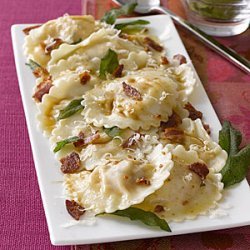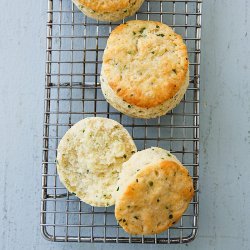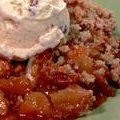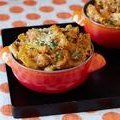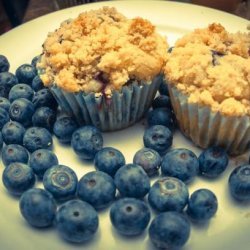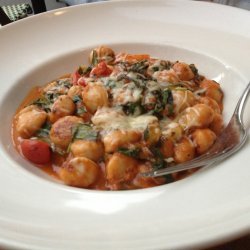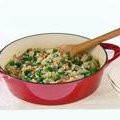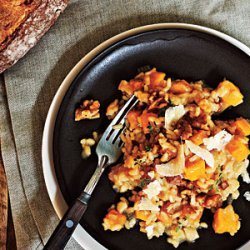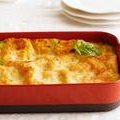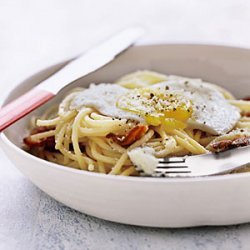Directions:
- Preheat the oven to 400 degrees F.
- For the pasta dough: Put the flour in a pile on a clean, dry work surface. Make a hole about 8-inches wide in the center of the flour pile. Crack all the eggs into the hole and add the olive oil and salt. With a fork beat the eggs and slowly begin to incorporate the flour into the egg mixture. Do not worry about the lumps.
- When most of the flour is incorporated, begin kneading the dough mixture with your hands. Knead the dough until it is smooth and supple, about 10 to15 minutes. It is really important to put your whole body into kneading otherwise the pasta will not develop the proper consistency. You need to knead! Wrap the dough in plastic wrap and let it relax for at least 1 hour. If using immediately do not refrigerate.
- While the dough is resting, make the filling: Put the butternut squash onto a baking sheet. Drizzle with some olive oil and add the cinnamon and a big pinch of salt. Mix it all together to coat the squash and arrange it in 1 layer on the baking sheet. Roast until the squash is soft and browned, about 15 to 20 minutes. Remove it from the oven and put it into the bowl of a food processor. Add the ricotta cheese, Parmesan, and the eggs and process until smooth. Taste and add salt, if needed. Scrape the filling into a pastry bag and refrigerate until ready to use.
- Roll the pasta: Set the pasta roller on the widest setting. Start with half the pasta dough. Using your hands, flatten the dough as much as you can to facilitate it going through the pasta roller. Run the dough through the roller twice dusting it with flour in between rolls if it feels sticky. Fold it into thirds turn it 90 degrees and run it through the pasta machine 2 to 3 times. Continue to run the pasta through the machine reducing the setting between each run. Stop when you get to the second to last setting. Always hold the pasta on the tops of your hands, palms down! If you hold it with your fingers up you will create stretch marks and those are never good.
- To assemble the agnolotti: Lay the pasta sheet on a floured work surface. Brush the lower half of the pasta (the part that is closest to you) lightly with water. This is the glue that will hold the agnolotti together. Use the water sparingly, if you use too much it will slide and not stick. Pipe 1-inch balls of filling onto the pasta that has been brushed with water, leaving about 2-inches between each ball. Fold the top half of the pasta over the balls to meet the bottom edge. Using your 2 index fingers poke around each filling ball to seal the agnolotti shut and make sure there are no air bubbles. Cut out each agnolotti using a small round fluted cutter. Transfer to a sheet tray coated with semolina or polenta. Cover and set aside until ready to use.
- To make the sauce: Put a tablespoon of extra-virgin olive oil into a large saute pan over medium high heat. Cut the bacon into small pieces and add it along with the garlic to the pan. When the garlic is lightly browned and aromatic remove it from the pan and discard it. When the bacon is crispy add the squash, season with salt, to taste, and cook for 2 minutes. Add the butter, chicken stock, and sage, and cook until the sauce thickens and looks velvety. Stir in the apple and taste for seasoning.
- Bring a large pot of well salted water to a boil over medium heat. Add the agnolotti and cook for 3 to 4 minutes. Carefully remove the pasta from the water and immediately put it into the pan with the sauce. Bring it to a boil, shaking the pan frequently. Remove from the heat, sprinkle in the Parmesan, and swirl the pasta until it's coated with the sauce. Transfer to a serving platter and serve immediately, sprinkled with a little more grated Parmesan and a drizzle of balsamic vinegar. Mangia bene!!
Nutrition Facts
| Amount Per 1 Serving | |||
| Calories | 1244.72 Kcal (5211 kJ) | ||
| Calories from fat | 573.63 Kcal | ||
| % Daily Value* | |||
| Total Fat | 63.74g | 98% | |
|---|---|---|---|
| Cholesterol | 441.89mg | 147% | |
| Sodium | 909.23mg | 38% | |
| Potassium | 1115.99mg | 24% | |
| Total Carbs | 115.81g | 39% | |
| Sugars | 4.46g | 18% | |
| Dietary Fiber | 7.52g | 30% | |
| Protein | 53.39g | 107% | |
| Vitamin C | 37.8mg | 63% | |
| Vitamin A | 1.8mg | 61% | |
| Iron | 5.3mg | 29% | |
| Calcium | 790.8mg | 79% | |
| Amount Per 100 g | |||
| Calories | 205.25 Kcal (859 kJ) | ||
| Calories from fat | 94.59 Kcal | ||
| % Daily Value* | |||
| Total Fat | 10.51g | 98% | |
|---|---|---|---|
| Cholesterol | 72.87mg | 147% | |
| Sodium | 149.93mg | 38% | |
| Potassium | 184.03mg | 24% | |
| Total Carbs | 19.1g | 39% | |
| Sugars | 0.74g | 18% | |
| Dietary Fiber | 1.24g | 30% | |
| Protein | 8.8g | 107% | |
| Vitamin C | 6.2mg | 63% | |
| Vitamin A | 0.3mg | 61% | |
| Iron | 0.9mg | 29% | |
| Calcium | 130.4mg | 79% | |
* Percent Daily Values are based on a 2000 calorie diet. Your daily values may be higher or lower depending on your calorie needs.
Find out how many calories should you eat.
Get Your Recipe of Health!
Follow RecipeOfHealth on Facebook!


